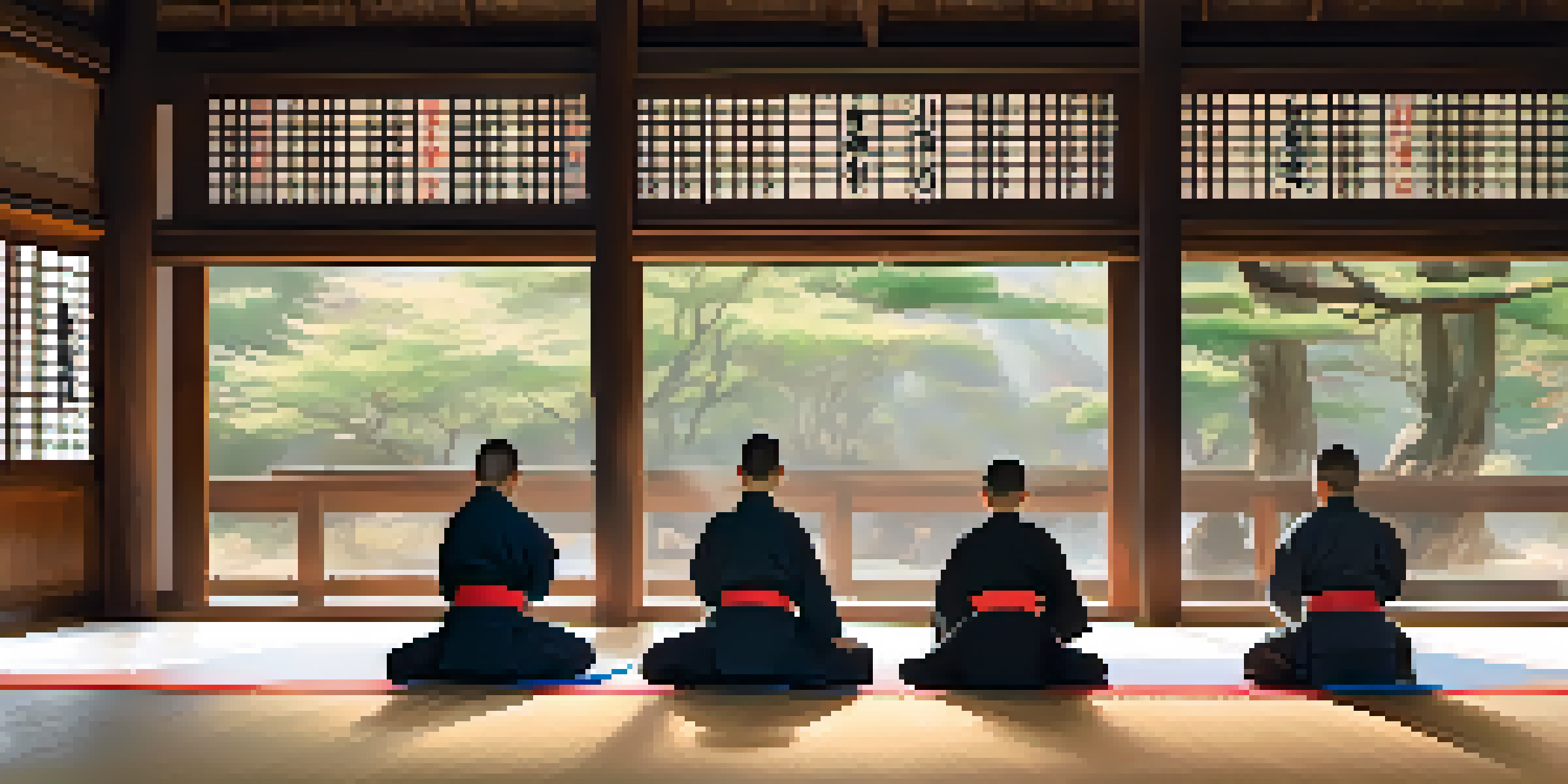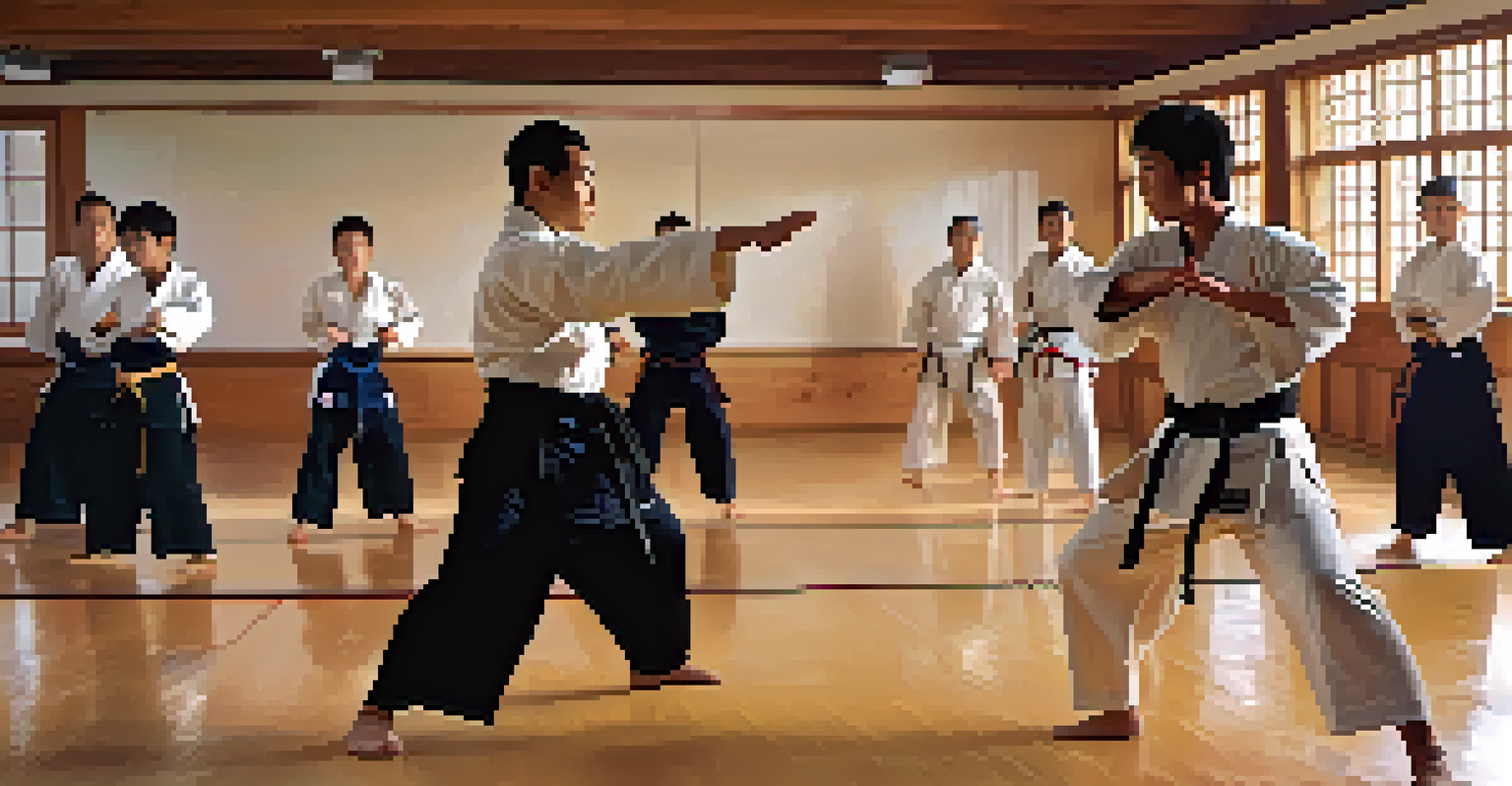How Martial Arts Training Fosters Effective Communication Skills

The Foundation of Communication in Martial Arts
At its core, martial arts is not just about physical prowess; it's also about communication. In dojos around the world, practitioners learn to convey intentions through body language, eye contact, and verbal cues. This multifaceted communication is essential for effectively executing techniques and ensuring safety.
The single biggest problem in communication is the illusion that it has taken place.
For instance, during sparring sessions, a martial artist must read their opponent's movements and intentions. This requires a keen understanding of non-verbal signals, such as posture and footwork, which are crucial for anticipating actions. Such skills translate well into everyday interactions, where reading social cues can enhance personal and professional relationships.
Moreover, instructors often emphasize the importance of clear verbal communication when teaching techniques. Whether it's giving feedback or explaining concepts, the ability to articulate thoughts clearly is vital. Thus, martial arts training lays a strong foundation for effective communication both inside and outside the dojo.
Building Trust Through Communication
Trust is a cornerstone of any successful training environment, and martial arts fosters this through open communication. Practitioners often pair up to practice techniques, which requires a level of trust to execute moves safely. This mutual reliance encourages honest conversations about comfort levels and boundaries.

For example, when a student feels uncomfortable with a certain technique, expressing this concern is crucial. The culture of respect in martial arts promotes this dialogue, allowing individuals to voice their needs without fear of judgment. This kind of trust-building communication helps practitioners grow their confidence both on and off the mat.
Communication is Key in Martial Arts
Martial arts emphasizes multifaceted communication through body language, verbal cues, and active listening, which enhances both training and everyday interactions.
As trust strengthens, so does the ability to communicate effectively. Practitioners often find that the skills they develop in the dojo—like giving constructive feedback and expressing vulnerability—spill over into their everyday lives, enhancing their ability to connect with others.
Learning to Listen: A Key Skill
Effective communication is a two-way street, and listening is just as critical as speaking. In martial arts, listening is paramount to understanding both verbal instructions and non-verbal cues from instructors and partners. This active listening cultivates a deeper awareness of one's surroundings and enhances the overall training experience.
Effective communication is 20% what you know and 80% how you feel about what you know.
Consider a scenario where an instructor demonstrates a new technique. Students must not only hear the instructions but also absorb the nuances of the movements being shown. This form of listening sharpens focus and helps practitioners grasp complex concepts more easily, reinforcing the importance of being present in conversations.
Ultimately, honing this listening skill in martial arts translates to better communication in daily life. Whether in personal relationships or professional settings, being an attentive listener fosters deeper connections and encourages meaningful exchanges.
The Role of Teamwork in Martial Arts
Martial arts training often involves partner work, emphasizing the importance of teamwork. Practicing with a partner requires clear communication to ensure both individuals are on the same page. This collaboration teaches practitioners how to articulate their thoughts while being receptive to their partner’s feedback.
For instance, during paired drills, one partner must communicate their intentions through both verbal and non-verbal cues. This collaboration not only improves technique but also strengthens the bond between partners, demonstrating that effective communication is crucial in achieving common goals.
Trust Builds Better Training Environments
Open communication fosters trust among practitioners, allowing for honest discussions about comfort levels and boundaries, which boosts confidence on and off the mat.
As practitioners engage in these teamwork activities, they often find that the skills they develop—such as compromise and negotiation—enhance their ability to communicate in broader contexts, whether in group projects at work or planning events with friends.
Managing Conflict with Communication Skills
Conflict is an inevitable part of any interpersonal relationship, and martial arts equips individuals with the tools to manage it. Through training, practitioners learn how to remain calm under pressure and communicate effectively during challenging situations. This skill is particularly valuable in both competitive and social settings.
For example, during sparring matches, disagreements can arise regarding the validity of a hit or a technique. Practitioners must learn to navigate these conflicts by discussing them openly and respectfully, which helps to resolve issues without escalating tensions. This experience teaches valuable lessons about conflict resolution.
By practicing these skills in a controlled environment, martial artists are better prepared to handle conflicts in real life. Whether it's resolving a misunderstanding with a colleague or addressing a disagreement with a friend, the ability to communicate effectively can lead to more positive outcomes.
Enhancing Emotional Intelligence Through Training
Martial arts training doesn't just build physical skills; it also enhances emotional intelligence. As practitioners engage in training, they become more attuned to their own emotions and those of others. This heightened awareness is essential for effective communication, as it allows individuals to respond thoughtfully rather than react impulsively.
For instance, when faced with a challenging sparring partner, a martial artist must manage feelings of frustration or anxiety. Learning to recognize and articulate these emotions fosters a deeper understanding of oneself and improves interactions with others. This self-awareness is a key component of emotional intelligence.
Feedback Fuels Growth and Learning
Constructive feedback in martial arts not only helps improve techniques but also teaches practitioners how to effectively give and receive input in various life situations.
As martial artists develop this emotional awareness, they often find that their communication skills improve significantly. Being able to express feelings and understand others’ perspectives fosters healthier relationships, whether in the dojo or in daily life.
The Importance of Feedback in Training
Feedback is a vital part of martial arts training, and the way it is given and received can significantly impact communication skills. Instructors regularly provide constructive feedback to help students improve, and this process teaches practitioners how to communicate effectively. The ability to give and receive feedback is a skill that translates to various aspects of life.
For instance, when a student struggles with a technique, an instructor may provide specific, actionable advice. This teaches the student how to listen carefully, assess their performance, and apply the feedback constructively. Learning to accept criticism gracefully is an invaluable skill that fosters growth.

Moreover, as practitioners become more comfortable giving feedback to peers, they develop their own communication styles. This practice not only enhances their martial arts skills but also equips them to navigate feedback in personal and professional contexts with confidence.